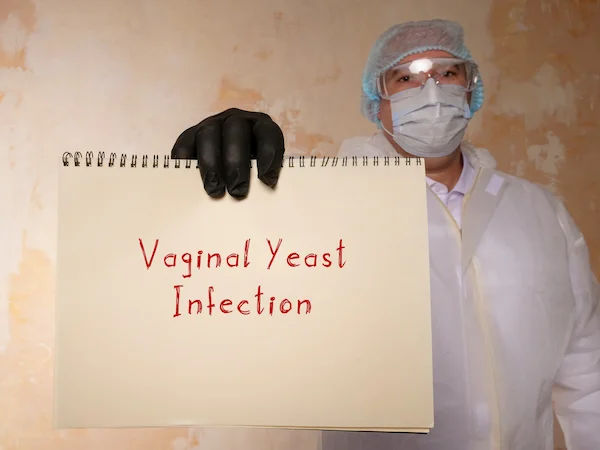Rhabdomyolysis Overview and Information
Know about the rhabdomylosis, common symptoms, causes, diagnosis, treatment and when to see the doctor and more.

Written by Dr. Rohinipriyanka Pondugula
Reviewed by Dr. J T Hema Pratima MBBS
Last updated on 21st Aug, 2025

Introduction
Rhabdomyolysis, often called "rhabdo," is a serious condition where damaged muscle tissue breaks down rapidly, releasing harmful substances into the bloodstream. This can lead to complications like kidney damage if not treated promptly.
While it may sound intimidating, understanding the condition, its symptoms, causes, and preventive measures can help you stay informed and take action if needed.
What is Rhabdomyolysis?
Rhabdomyolysis occurs when muscle fibres break down and release a protein called myoglobin into the blood. Myoglobin is normally filtered by the kidneys, but in large amounts, it can clog the kidneys, leading to kidney failure. Other substances released from damaged muscles, such as potassium and phosphate, can also cause dangerous imbalances in the body.
Consult General Practitioner for Personalised Advice
Common Symptoms of Rhabdomyolysis
The symptoms of rhabdomyolysis can vary from mild to severe. Some people may not notice symptoms immediately, while others experience:
- Muscle pain, weakness, or stiffness (especially in the shoulders, thighs, or lower back)
- Dark, tea-colored urine (due to myoglobin release)
- Fatigue or general weakness
- Swelling or tenderness in muscles
- Fever or nausea
- Decreased urine output (a sign of kidney problems)
If you notice these symptoms—especially after intense exercise, trauma, or taking certain medications—seek medical attention immediately.
What Causes Rhabdomyolysis?
Several factors can lead to muscle breakdown, including:
1. Physical Causes
- Extreme exercise (especially in untrained individuals)
- Crush injuries (from accidents or prolonged immobilisation)
- Heatstroke or severe dehydration
- Electrical shock or severe burns
2. Medical Conditions
- Muscle diseases (like muscular dystrophy)
- Severe infections (such as sepsis or viral infections)
- Metabolic disorders (like thyroid problems or electrolyte imbalances)
3. Medications & Toxins
- Statins (cholesterol-lowering drugs)
- Certain antibiotics or antiviral medications
- Illegal drugs (like cocaine or amphetamines)
- Alcohol abuse
How is Rhabdomyolysis Diagnosed?
Doctors diagnose rhabdomyolysis through:
- Blood tests (to check for elevated creatine kinase (CK), myoglobin, and kidney function)
- Urine tests (to detect myoglobin)
- Imaging tests (like MRI or ultrasound if muscle damage is suspected)
Early diagnosis is crucial to prevent complications like kidney failure.
Treatment & Management
Treatment focuses on stopping muscle damage and protecting the kidneys. Depending on severity, it may include:
1. Hydration
- Intravenous (IV) fluids help flush out myoglobin from the kidneys.
- Drinking plenty of water is essential, especially after intense exercise.
2. Medications
- Electrolyte management (to correct imbalances in potassium, calcium, or phosphorus).
- Dialysis (in severe cases where kidneys are failing).
3. Rest & Recovery
- Avoid strenuous activity until muscles heal.
- Physical therapy may help in severe cases.
Prevention Tips
You can reduce the risk of rhabdomyolysis by:
- Staying hydrated (drink water before, during, and after exercise).
- Avoiding extreme workouts (gradually increase intensity).
- Recognising warning signs (muscle pain, dark urine).
- Monitoring medications (ask your doctor about side effects).
- Avoiding alcohol & drugs that can increase risk.
When to See a Doctor?
Seek immediate medical help if you experience:
- Severe muscle pain with weakness
- Dark-colored urine
- Reduced urine output
- Signs of dehydration (dizziness, dry mouth)
Final Thoughts
Rhabdomyolysis is an abnormal breakage of muscle fibres. The symptoms include muscle pain, dark tea-coloured urine and tiredness, which may be caused due to extreme exercises or medical conditions too. Medications and rest may help in the recovery from rhabdomyolysis. If the condition worsens or persists, consult your doctor for further advice.
Consult General Practitioner for Personalised Advice
Consult General Practitioner for Personalised Advice

Dr. Suvadeep Sen
Critical Care Specialist
12 Years • MBBS, MD, FNB (CRITICAL CARE MEDICINE), EDIC
Mumbai
Apollo Hospitals CBD Belapur, Mumbai

Dr. Tanmaya Kumar Sahu
General Physician/ Internal Medicine Specialist
12 Years • MBBS, MD ( Internal Medicine )
Bhubaneswar
Apollo Hospitals Old Sainik School Road, Bhubaneswar
Dr. Gaddam Manoj
General Practitioner
1 Years • MBBS
Hyderabad
Aaradhya clinic, Hyderabad

Dr Suseela
General Physician
5 Years • MBBS
Bengaluru
Apollo Medical Center, Marathahalli, Bengaluru
Dr. Sahana B
General Practitioner
3 Years • MBBS
Koppal
Khushi multi-speciality hospital, Koppal
Consult General Practitioner for Personalised Advice

Dr. Suvadeep Sen
Critical Care Specialist
12 Years • MBBS, MD, FNB (CRITICAL CARE MEDICINE), EDIC
Mumbai
Apollo Hospitals CBD Belapur, Mumbai

Dr. Tanmaya Kumar Sahu
General Physician/ Internal Medicine Specialist
12 Years • MBBS, MD ( Internal Medicine )
Bhubaneswar
Apollo Hospitals Old Sainik School Road, Bhubaneswar
Dr. Gaddam Manoj
General Practitioner
1 Years • MBBS
Hyderabad
Aaradhya clinic, Hyderabad

Dr Suseela
General Physician
5 Years • MBBS
Bengaluru
Apollo Medical Center, Marathahalli, Bengaluru
Dr. Sahana B
General Practitioner
3 Years • MBBS
Koppal
Khushi multi-speciality hospital, Koppal

.webp)


